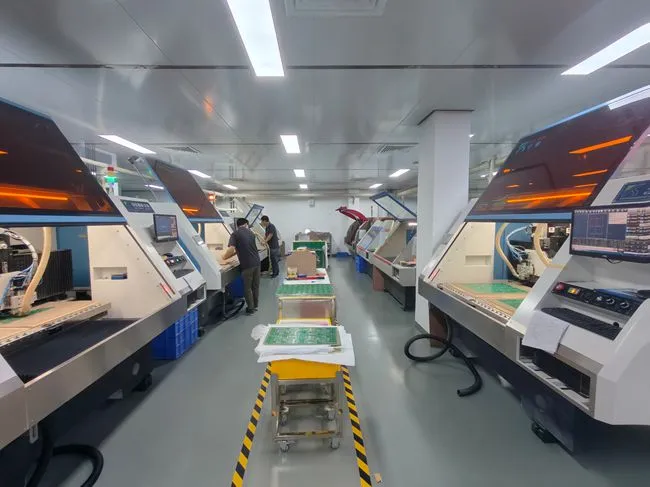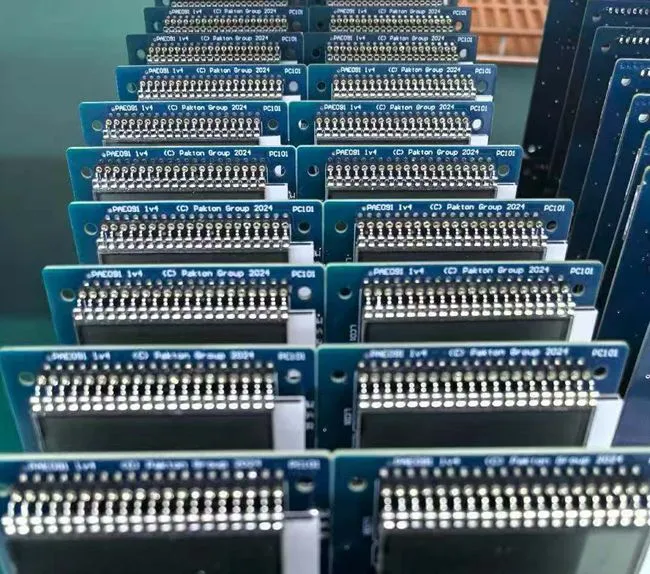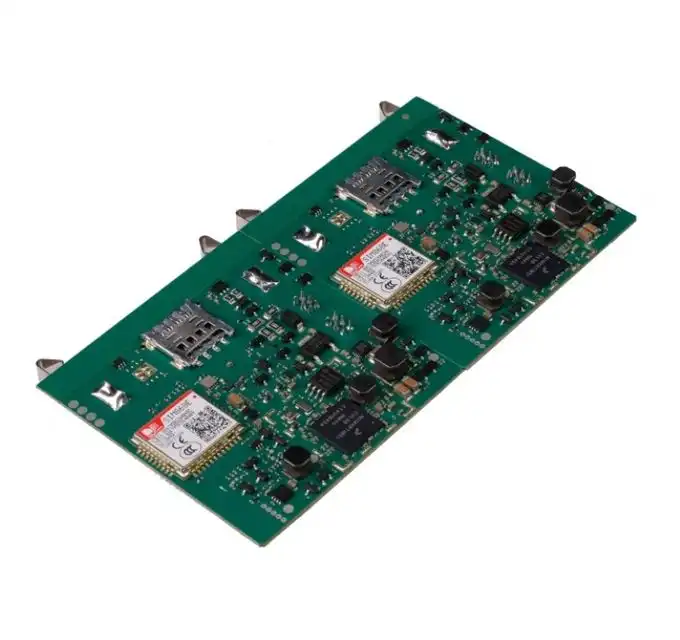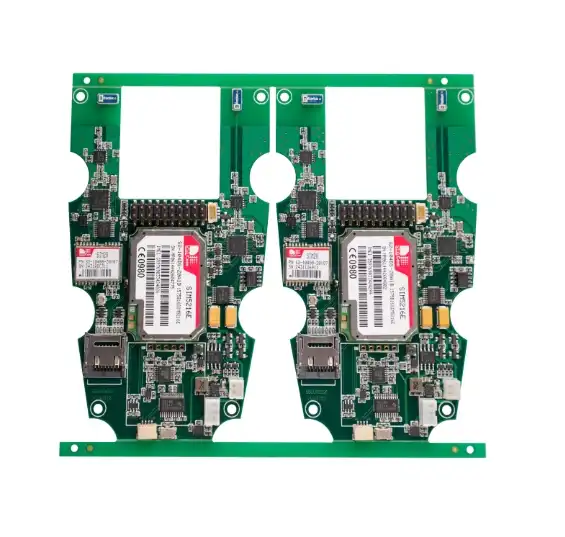Introducing ICT and FCT in PCB Mass Production
In the realm of PCB mass production, In-Circuit Testing (ICT) and Functional Circuit Testing (FCT) play pivotal roles in ensuring the quality and reliability of manufactured boards. ICT is a powerful technique that examines individual components and their connections on a populated PCB. This method employs a bed-of-nails fixture to make contact with specific test points, allowing for rapid and comprehensive testing of each board.
FCT, on the other hand, evaluates the overall functionality of the assembled PCB. This testing approach simulates real-world operating conditions to verify that the board performs as intended. FCT is particularly crucial for complex multilayer PCBs and high-density interconnect (HDI) designs, where intricate circuitry and advanced components demand thorough examination.
The synergy between ICT and FCT in PCB mass production creates a robust quality assurance framework. While ICT excels at detecting manufacturing defects such as short circuits, open circuits, and incorrect component values, FCT ensures that the board functions correctly as a complete system. This dual-testing approach is especially valuable for automotive and industrial-grade PCBs, where reliability and long-term performance are paramount.
Benefits of Implementing ICT and FCT
Implementing both ICT and FCT in PCB mass production offers numerous advantages:
- Enhanced defect detection, reducing the likelihood of faulty boards reaching end-users
- Improved production yield through early identification of manufacturing issues
- Reduced rework costs and time by pinpointing exact locations of defects
- Increased confidence in product quality, particularly for high-reliability applications
- Facilitation of continuous improvement in the manufacturing process
These benefits are particularly significant for companies engaged in the production of high-power supply boards, automotive-grade PCBs, and other applications where failure is not an option. The combination of ICT and FCT supports the delivery of high-quality, reliable PCBs that meet stringent industry standards.
Preparing for ICT and FCT Implementation
Successful implementation of ICT and FCT in PCB mass production requires meticulous preparation. This phase is crucial for ensuring that the testing processes are effective, efficient, and aligned with the specific requirements of the PCB design and intended application.
Design for Testability (DFT) Considerations
Incorporating Design for Testability principles from the outset of PCB development is essential. This approach involves:
- Strategically placing test points to maximize test coverage
- Ensuring adequate spacing between test points to accommodate ICT fixtures
- Designing PCB layouts that facilitate easy access for both ICT probes and FCT connections
- Considering the inclusion of built-in self-test (BIST) capabilities for complex designs
DFT practices are particularly important for high-density HDI PCBs and flexible/rigid-flex PCBs, where space constraints and unique form factors can complicate testing procedures. By addressing testability early in the design phase, manufacturers can significantly enhance the effectiveness of both ICT and FCT processes.
Test Plan Development
Developing comprehensive test plans for both ICT and FCT is a critical step in the preparation process. These plans should include:
- Detailed specifications of test parameters and acceptance criteria
- Identification of critical components and functional blocks requiring special attention
- Establishment of test sequences that optimize efficiency without compromising thoroughness
- Definition of pass/fail criteria for each test point and functional test
For complex assemblies such as high-power supply boards or automotive-grade PCBs, the test plan should also incorporate specialized testing requirements, such as thermal cycling or extended burn-in periods. This ensures that the PCBs not only function correctly at the time of manufacture but also maintain reliability over their intended lifespan.
Equipment and Fixture Preparation
Selecting and preparing the appropriate testing equipment and fixtures is crucial for effective ICT and FCT implementation. This involves:
- Choosing ICT systems with sufficient channel count and measurement capabilities
- Designing and fabricating custom bed-of-nails fixtures for each PCB design
- Procuring or developing FCT equipment capable of simulating real-world operating conditions
- Calibrating all test equipment to ensure accuracy and repeatability
For manufacturers handling a diverse range of PCB types, from simple multilayer boards to complex HDI designs, investing in versatile testing equipment can provide significant long-term benefits. This flexibility allows for rapid adaptation to different product lines and customer requirements, supporting a one-stop PCBA service model.

Implementing ICT and FCT in the Production Line
The implementation of ICT and FCT in PCB mass production requires careful integration into the existing manufacturing workflow. This process involves several key steps to ensure seamless operation and maximum effectiveness of the testing procedures.
Integration with SMT and Through-Hole Assembly Processes
Effective integration of ICT and FCT with SMT (Surface Mount Technology) and through-hole assembly processes is crucial for maintaining production efficiency. Consider the following aspects:
- Positioning ICT stations immediately after the assembly process to catch defects early
- Implementing automated handling systems to transfer PCBs between assembly and testing stages
- Coordinating test data collection with production tracking systems for real-time quality monitoring
- Establishing clear protocols for handling and retesting boards that fail initial tests
This integration is particularly important for high-volume production of multilayer PCBs and HDI boards, where rapid identification of assembly issues can significantly reduce overall production costs and improve yield.
Training and Quality Control Measures
Proper training of personnel and implementation of robust quality control measures are essential for the success of ICT and FCT in PCB mass production. Key considerations include:
- Providing comprehensive training to operators on ICT and FCT equipment operation and result interpretation
- Establishing clear procedures for handling test failures and initiating corrective actions
- Implementing regular calibration and maintenance schedules for all testing equipment
- Conducting periodic audits of the testing process to ensure adherence to quality standards
For manufacturers offering turnkey PCBA services, investing in ongoing training and quality control measures demonstrates a commitment to delivering high-reliability products, particularly important for automotive and industrial-grade PCB production.
Data Collection and Analysis
Effective data collection and analysis are crucial for optimizing ICT and FCT processes in PCB mass production. Implement the following practices:
- Establishing automated data logging systems to capture detailed test results
- Utilizing statistical process control (SPC) techniques to identify trends and potential issues
- Implementing feedback loops to quickly address recurring defects in the production process
- Leveraging data analytics to continuously improve test coverage and efficiency
By employing advanced data analysis techniques, manufacturers can not only improve the immediate quality of their PCB production but also drive long-term improvements in design and manufacturing processes. This approach is particularly valuable for companies engaged in the production of complex, high-reliability PCBs for demanding applications.
Conclusion
Implementing ICT and FCT in PCB mass production is a complex but essential process for ensuring the quality and reliability of manufactured boards. By carefully preparing, integrating, and continuously improving these testing procedures, PCB manufacturers and suppliers can significantly enhance their production capabilities. This comprehensive approach to testing is particularly crucial for companies producing high-density, multilayer PCBs and offering turnkey PCBA services.
As the demand for more complex and reliable electronic products continues to grow, the role of robust testing in PCB mass production becomes increasingly important. Manufacturers who excel in implementing these testing methodologies position themselves as preferred suppliers in the competitive PCB industry, capable of meeting the most stringent quality requirements for automotive, industrial, and other high-reliability applications.
FAQ
What is the difference between ICT and FCT in PCB testing?
ICT (In-Circuit Testing) focuses on testing individual components and connections on a PCB, while FCT (Functional Circuit Testing) evaluates the overall functionality of the assembled board under simulated operating conditions.
How does ICT and FCT improve PCB quality in mass production?
These testing methods help detect manufacturing defects, ensure proper assembly, and verify functional performance, significantly reducing the likelihood of faulty boards reaching customers.
What types of PCBs benefit most from ICT and FCT?
Complex multilayer PCBs, high-density interconnect (HDI) boards, and PCBs for critical applications like automotive and industrial use benefit greatly from the comprehensive testing provided by ICT and FCT.
Comprehensive PCB Manufacturing and Assembly Services | Ring PCB
Ring PCB Technology Co., Limited offers a complete suite of PCB manufacturing and assembly services, leveraging our expertise in ICT and FCT implementation. Our state-of-the-art facility ensures high-quality production of multilayer, HDI, and flexible PCBs, complemented by advanced SMT assembly and rigorous testing procedures. With our one-stop PCBA service, we deliver reliable, high-performance boards for diverse industries. Contact us at [email protected] to learn how our comprehensive solutions can meet your PCB manufacturing needs.
References
1. Johnson, M. (2022). "Advanced Techniques in PCB Testing for Mass Production." Journal of Electronics Manufacturing, 15(3), 78-92.
2. Smith, R. & Brown, T. (2021). "Integrating ICT and FCT in High-Volume PCB Production Lines." International Conference on Electronics Assembly, 112-125.
3. Lee, K. (2023). "Optimizing Test Coverage in Complex Multilayer PCB Designs." IEEE Transactions on Electronics Packaging Manufacturing, 46(2), 201-215.
4. Garcia, A. et al. (2022). "Data-Driven Approaches to Improving PCB Testing Efficiency." Quality and Reliability Engineering International, 38(4), 1852-1867.
5. Wilson, D. (2023). "Design for Testability: Enhancing ICT and FCT Effectiveness in PCB Manufacturing." Proceedings of the Annual Symposium on Quality Electronic Design, 45-58.






